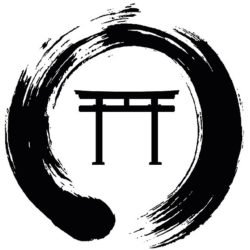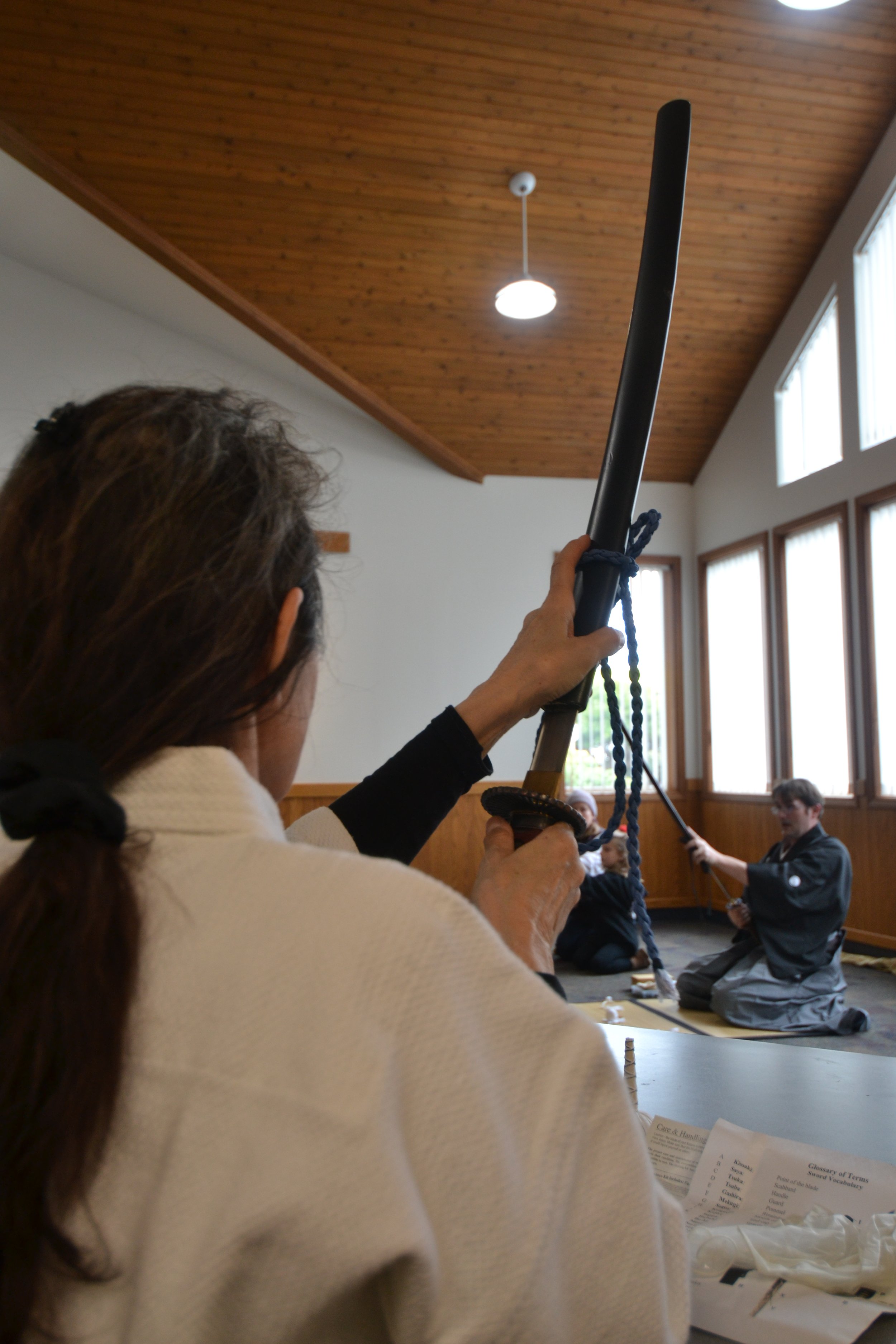ADVANCED STUDY
To understand the Nature of one thing is to understand the nature of many things-Miyamoto Musashi
As Musashi implied, it is a great folly to underestimate the value of dispelling ignorance and embracing truth.
To this end I am happy to provide to a select few students, a pathway to understanding the multi-faceted way of life that was available in ancient japan.
Mastery of the individual arts is not as important as understanding how they are all connected together but to do this you must experience these things for yourself.
Shodo
There is a myriad of things that can be learned from the practice of Shodo for the Swordsman:
Permanence of action
Once pen is placed to paper, it can not be recalled. Once a harsh word is spoken, once the sword leaves the saya it can not be un-done. Every interaction is important.
Moving from center
The Brush movement is controlled by your center and breath.
Failure is the building blocks of success
Page after Page with nothing more than a single black line is used chasing consistency with nothing more than a single line
The importance is in the Doing not the Knowing
Your body must understand how to do it with experience. There are no Shortcuts
Bonsai
learning bonsai can complement a swordsman's martial training by fostering patience, attention to detail, composure, balance, and a deeper connection with nature. These qualities can contribute to a more well-rounded and mindful martial artist, enhancing their physical and mental attributes, and helping them excel in the discipline of swordsmanship.
-
Bonsai cultivation requires a great deal of patience and discipline. The process of shaping and nurturing a bonsai tree over many years parallels the dedication and perseverance required in martial arts, particularly swordsmanship. It teaches practitioners to set long-term goals and work steadily toward achieving them.
-
Bonsai cultivation involves intricate pruning, wiring, and maintenance. These activities demand a keen eye for detail, precision, and a deep understanding of the tree's growth patterns. These skills can translate into heightened awareness and precision in martial arts techniques.
-
Bonsai work often requires a calm and focused state of mind. Trimming and shaping the tree's branches and foliage necessitate steady hands and a tranquil disposition. This ability to maintain composure under delicate and precise tasks can be beneficial for a swordsman when executing precise strikes and maneuvers.
-
Creating a harmonious bonsai tree involves finding the right balance between the roots, trunk, branches, and foliage. Similarly, in martial arts, balance is essential for stability and effective movement. Learning to create and maintain balance in bonsai can enhance a swordsman's understanding of physical balance and control.
-
Bonsai is deeply rooted in an appreciation of nature and the changing seasons. Developing this connection with the natural world can promote a greater sense of mindfulness, which is valuable for a swordsman to be fully aware of their surroundings during combat.
-
Bonsai is considered an art form, and practitioners often develop a refined sense of aesthetics. This can influence a swordsman's appreciation for the beauty and elegance of their martial art, leading to more graceful and precise movements.
Equipment Maintenance
Cleaning and maintenance is a integral part of ownership of any tool and can be said doubly so with a Sword.
Understanding how each part of the Samurai Sword adds value to the whole, encourages the student to understand how they should assess what adds value and maintain those parts of themselves.
Shinken [Katana/Wakizashi/Tanto]
Normal Blade cleaning
Saya Shimming
Bokken
Uniform
Kendo Equipment Maintenance
Shinai
Bogu Cleaning
Sushi Class
-
Attention to Detail: Sushi making is a meticulous process that requires precision and attention to detail. Each ingredient must be carefully prepared and arranged. This meticulousness can help a swordsman develop a keener eye for detail, which is crucial in martial arts for recognizing opponents' weaknesses, patterns, and openings.
-
Focus and Concentration: Making sushi demands concentration and focus. From selecting the right fish to mastering the art of rolling, every step requires complete attention. This practice can help a swordsman hone their ability to stay fully present in the moment, a skill that is vital for reacting swiftly and effectively in combat situations.
-
Mindful Eating: Sushi is not just about making; it's also about savoring. By learning to appreciate the subtleties of taste and texture in sushi, a swordsman can develop a heightened sense of awareness, which can be beneficial for assessing situations and opponents during combat.
-
Cultural Understanding: Sushi making is deeply rooted in Japanese culture. Learning this art can provide insights into the traditions, values, and philosophies of Japan, which can broaden a swordsman's cultural knowledge and appreciation.
In summary, the practice of sushi making can complement a swordsman's training by fostering mindfulness, attention to detail, patience, and focus. These qualities can contribute to becoming a more thoughtful, well-rounded martial artist who can react effectively and decisively in the heat of battle. Additionally, the cultural and culinary aspects of sushi making can provide a deeper understanding of Japanese traditions, which may further enrich a swordsman's martial journey.
Meditation
"Heijoshin" (平常心) is a concept from Japanese martial arts and Zen Buddhism that can be translated as "a mind in a state of everydayness" or "a calm and composed mind." It refers to a mental state of being emotionally and mentally stable, regardless of external circumstances or pressures.
Heijoshin is a state of mind that allows a practitioner to remain calm and focused even in the midst of combat or other high-stress situations. It means not being swayed by fear, anger, or anxiety, but instead maintaining a clear and centered mindset that allows one to Act instead of Re-Act .
It is valuable to train to achieve this mental state through meditation and consistent practice. By cultivating heijoshin, we aim to make decisions and react to situations without being clouded by emotional reactions. This mental clarity enables them to respond effectively and efficiently to challenges, whether in combat or in daily life.
This class or course, presented by our group of traditional martial artists is a time-honored tradition handed down to help the samurai stay focused in the chaos of battle and life. This is a must for any serious student.
-
Once centered, participants will receive training on efficient movement techniques rooted in time-honored traditions, laws of motion, and structural principles. These techniques will enable team members to navigate their work environments with improved efficiency and effectiveness.
As participants develop a foundation in basic techniques, they will have the opportunity to work in groups, engaging in traditional swordsmanship exercises using wooden swords. This segment emphasizes the importance of distance, timing, and footwork in reading and responding to their partners' movements. By honing these skills, team members will enhance their ability to understand nonverbal cues and collaborate seamlessly.
Following a break for lunch and refreshments, the program will resume with distance and timing drills, further sharpening participants' ability to identify openings and position themselves strategically. Understanding one's own strengths and positioning is vital in any working environment, and these drills will reinforce this essential skill set.
To culminate the program, participants will have the chance to don the Bogu (Kendo Armor) and apply all the skills they have learned in a friendly combat tournament. This exciting activity brings together strategy, energy, and the culmination of their training, fostering teamwork, healthy competition, and the opportunity to put their newfound skills into action.
-
The cost for a full day of our team building program is $$$$. Participants are advised to wear comfortable clothing and bring water and lunch to ensure a comfortable and enjoyable experience throughout the day.
-
Through our team-building events, participants will gain valuable insights into meditation practices, efficient movement techniques, reading nonverbal cues, strategic positioning, and collaborative teamwork. These experiences will contribute to a more centered and clear-headed working environment, empowering teams to perform at their best and achieve success collectively.








